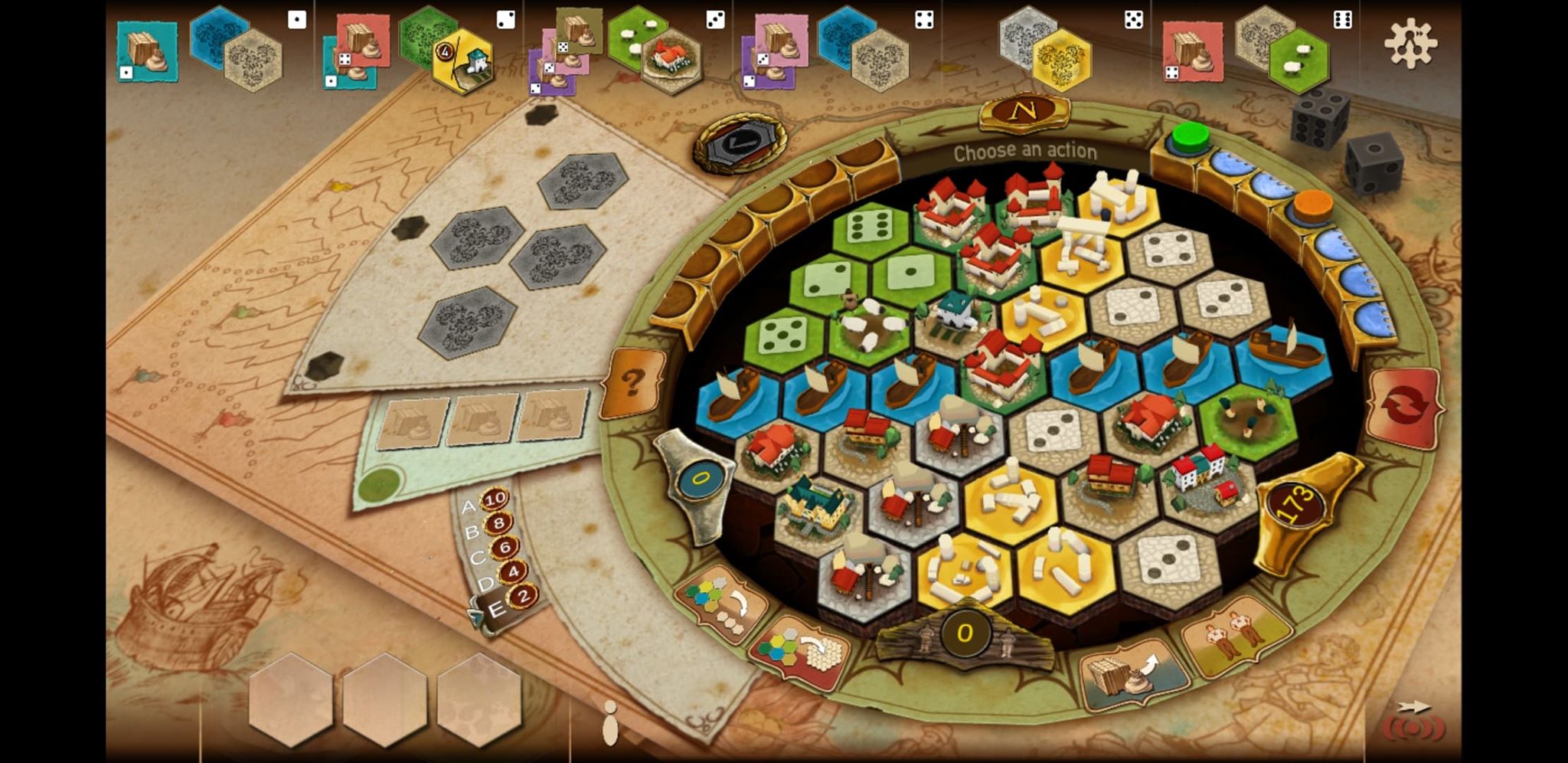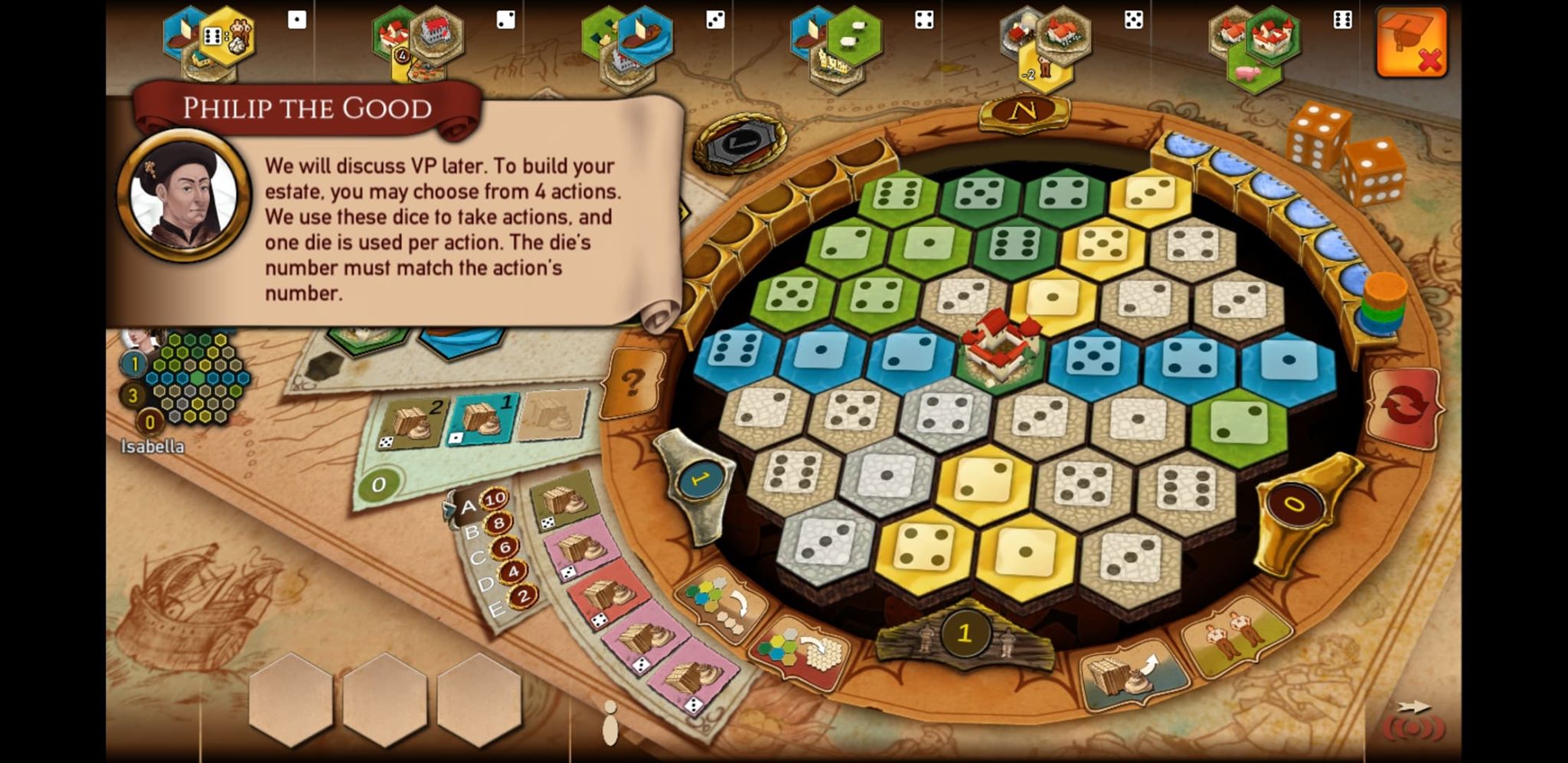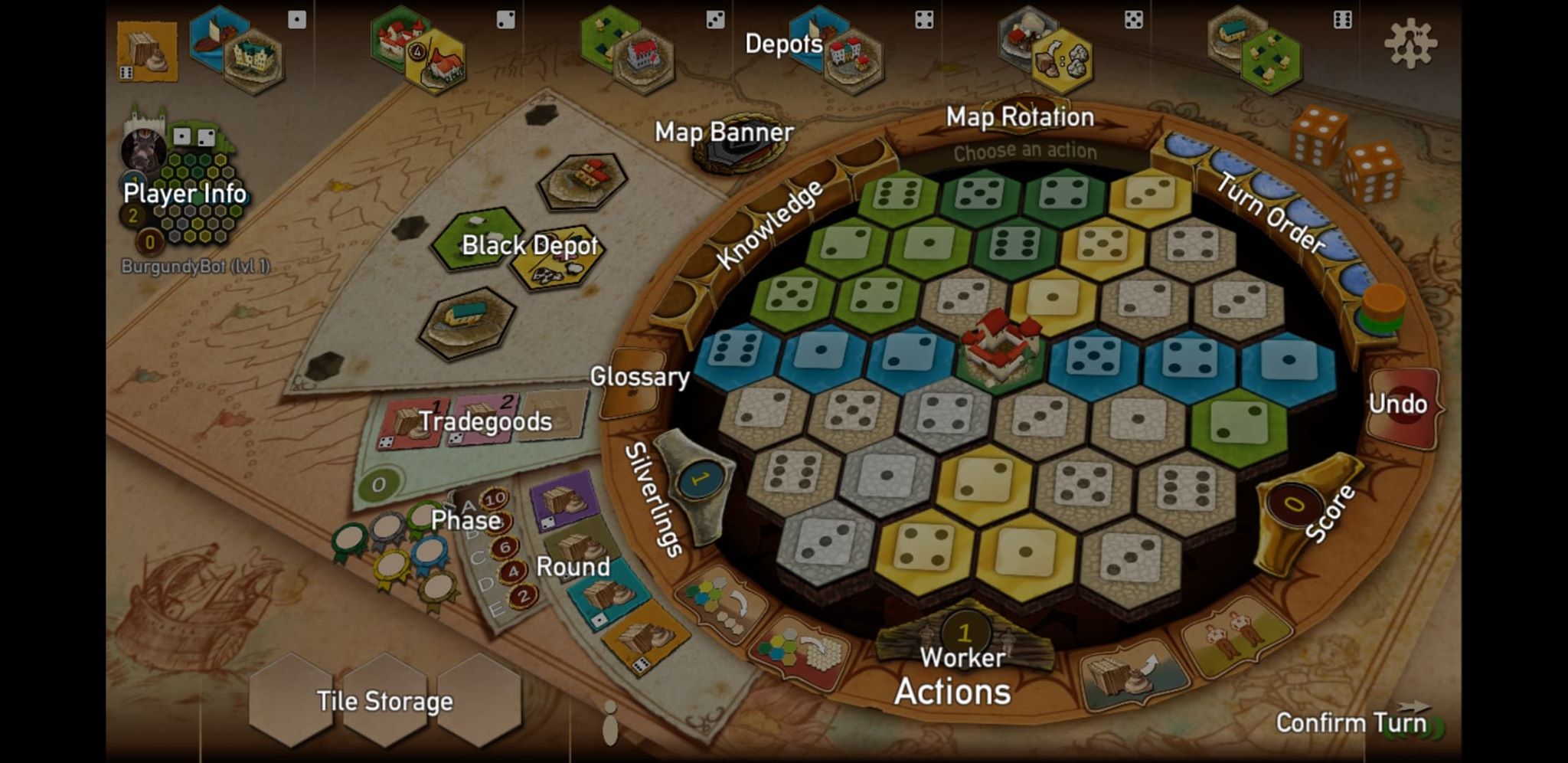![]() As interest in board games continues to rise, so too does the interest in exploring new ways of playing those games. One such way is through digital ‘ports’ of those games – translating them PCs, consoles, phones, and tablets.
As interest in board games continues to rise, so too does the interest in exploring new ways of playing those games. One such way is through digital ‘ports’ of those games – translating them PCs, consoles, phones, and tablets.
While digital versions may not exactly replace the feeling of a physical board game, many add subtle tweaks that such as for solo play, campaign modes, online competition, or simply as a more portable way to enjoy the game. This is new territory to explore. Welcome, to the Pixel Provinces.
![]()
Since it was published by Ravensburger in 2011, Stefan Feld’s The Castles of Burgundy has been a hit, earning multiple award nominations and fan praise. It has become synonymous with with iconic Feld game designs and introduced a huge swath of gamers to his catalog of famously thinky designs. How will this digital adaptation stack up to the original?
The Game
In The Castles of Burgundy, players are aristocrats who hold dominion over regions of land, and each are playing with the goal of building up their land with settlements, river trade routes, silver mines, and livestock.
There are five phases of the game, each with five rounds, during which players each roll two dice and use them to take two actions. These actions allow you to take a tile to build up your region with later, build a tile on your player board corresponding to the die number, deliver goods, or take workers to modify your dice rolls in future rounds. Each type of tile scores differently and some provide immediate or endgame scoring effects. Players continue competing for tiles and completing sections of their land to gain victory points, and after five phases whoever has amassed the most VP wins.
Tutorial
Upon starting the tutorial, players are greeted by Philip and Isabella, the Duke and Duchess of Burgundy, who double as your charming tutorial guides. The tutorial is separated into individually replayable sections, covering “Taking Actions,” “Terrain Types,” and “Completing Sections”.
The app’s tutorial runs smoothly and does an excellent job covering the basics of how to play as a refresher for experienced players, but those unfamiliar with the game at all may have some trouble getting through it. While some of the rules can easily be understood through a brief explanation, some of the more intricate parts of the game, such as scoring, would be easier processed if accompanied by an example or two as part of the learning process. Luckily, a copy of the rulebook is also included in the app for players wanting to delve deeper into the game’s details beyond the primers.
Although players familiar with the game may not need a rules refresher, playing through the tutorial is crucial to getting your digital bearings when it comes to the new board layout. Condensing a central board and players boards onto one screen required a drastic layout reorganization, and the tutorial is a wonderfully effective guide for acquainting you with the new arrangement.
Gameplay Features
The Castles of Burgundy comes with three game modes: Ranked, Casual, and Local. Local games can be played with up to four players, three of which can be any combination of local friends and / or AI opponents. AI players likewise come in three difficulty levels – none of which put up an easy fight. Even the Level 1 ‘Burgundybot’ can pose a challenge in a Local game, so the increasingly difficult bots offer plenty of opportunity to hone your Castles of Burgundy skills. Both Local and Casual games also provide players the option of using different player boards than their opponents, further adding to the app’s depth of replayability.

Each tile has a different effect when built on a player’s board, and completing terrain sections generates points
Venturing online provides even more opportunity for testing your Burgundy-related skills. Casual mode allows players to send game requests to friends and play online together, while Ranked mode lets you to play online against random opponents. Ranked games are particularly useful in this aspect because they are asynchronous and the player lobby is rarely empty, so the wait to find online players is usually short. This is a great option for players looking to play a few turns in their free time without having to commit to a full game in one sitting. Ranked games also influence play statistics, your online ranking, and achievements, all of which offer an engaging trophy hunt in between games.
Functionality
While the board layout may differ visually from its analog counterpart, Castles of Burgundy’s art style does a wonderful job representing the original game, and its calming music conjures images of rolling hills and medieval estates.
The game’s developers had a challenge to overcome with fitting a table of up to five boards onto a mobile screen, and overall the did an admirable job achieving this. The board layout is drastically different from that of the physical game, but running through the tutorial can help lost players quickly understand the new layout. Each action can be accomplished through several methods, including on-screen buttons, dragging, and holding down / selecting. That said, although this makes it easy for each player to play in the way most intuitive to them, the on-screen buttons do unfortunately clutter up the app’s valuable screen space at the bottom of the board. Moreover, players are able to further personalize their controls with the ability to select between the game’s three different animation speed settings. Having the option to choose between these is great, though unfortunately even the fast mode tends to be a bit slow, thus lengthening the overall game time.
A button that is much appreciated, however, is the undo button, which allows players to rewind their actions and begin their turn again before passing to the next player. Each action, regardless of the method used to carry it out, leads to the same confirmation screen which requires players to confirm their action before taking it. Combined with the undo button, this duality makes it nearly impossible for players to accidentally take the wrong action. Given the amount of visual real estate the game requires, these are a welcomed check against accidental screen actions.
Verdict
Both new and experienced players alike will enjoy this much beloved hit game turned digital. While parts of the board can feel cluttered – despite a complete layout overhaul from the board game – the multiple avenues for player personalization allow players to interact with the game in the way they find most intuitive and rewarding. Three different game modes spanning online and offline modes offer plenty of game variation, while its achievement system, challenging AI, and variable board setups introduce ample replayability. Overall, Castles of Burgundy is a fun adaptation that takes what makes the original game so enjoyable and recreates it well in the digital frontier.
The Castles of Burgundy is available on these platforms:
![]()
Sara Perry is a contributing writer and aspiring game designer with a love for games both physical and digital. Also cats. She can be best reached via Twitter.
Feel free to share your thoughts with us over on our social media pages!





